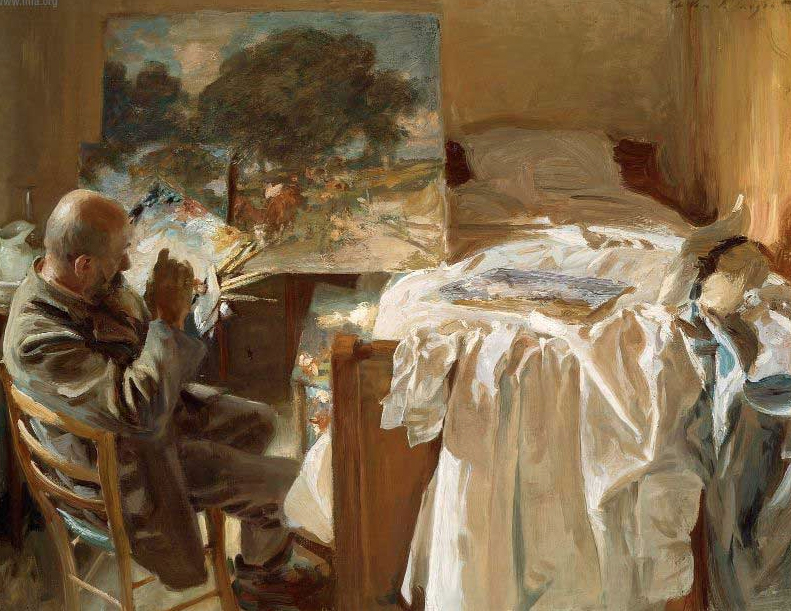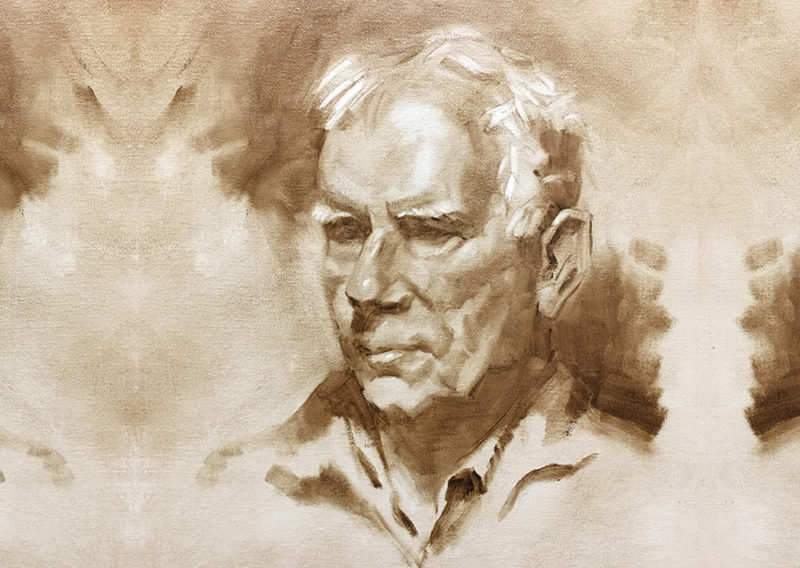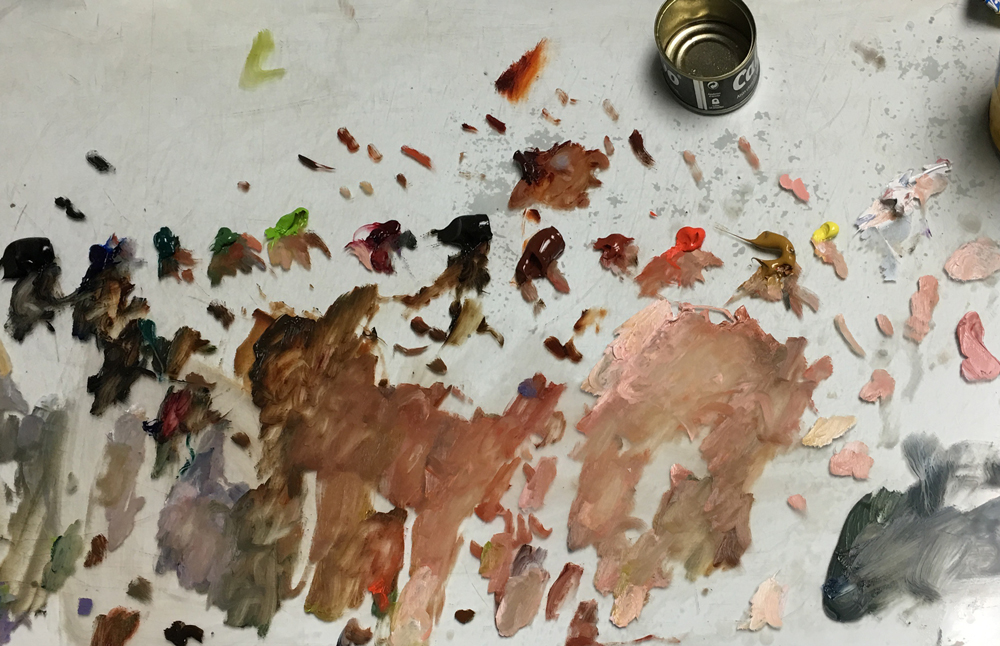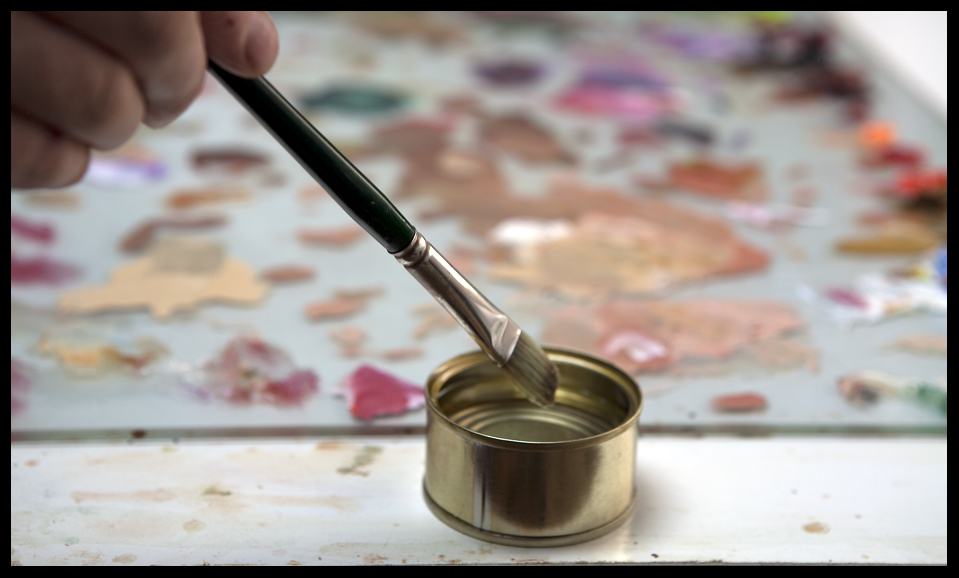There are countless ways how to start a portrait in oil.
I have already made a video on Youtube with four different options. Three of these are based on copying a photograph in one way or another. Continue reading “How to start a portrait in oil paint”
Painting a portrait from life
Life model
Painting a portrait from life? Do you work a lot from photography? There is nothing wrong with that, I have said so often. It gives you the opportunity to calmly create a portrait with good likeness and time to mix the colours at ease. It is also often a fantastic picture that invites you to make a beautiful painting.
But there are also pitfalls, namely that you create a too detailed reproduction of the photo. That is a missed opportunity. A painting must be your interpretation and not a copied image. Continue reading “Painting a portrait from life”
oil paint and medium
https://youtu.be/jHF8Hf_HhgE
Use of paint
This is about oil paint and medium. But a general word about oil paint. Paint with paint; you can not paint without paint! I see students using far too little paint. Listen to me me: this is often simply out of fear. Not because of artistic viewpoints. Overcome that fear.
The problem starts at the palette. If there is too little paint there, how on earth do you get enough on your canvas? Running out of paint often occurs at the end of a painting-session. I see there is a tendency to thin the amount of paint on the palette with medium in order to gain some volume, instead of re-adding paint from the tube. ERROR!
So, do not be stingy with paint. You really need paint to obtain a painterly effect. Continue reading “oil paint and medium”
Very interesting link
This week on Facebook I came across a very interesting blog. A number of painters was asked for their palette and what medium they use. Complemented by a number of palettes of already deceased painter this website gives a very interesting insight into the kitchens of these painters:
Paul Cezanne, Gideon Bok, David Campbell, Lin Chen, Christopher Chippendale,Susanna Coffey, Jean-Baptiste Camille Corot, Lois Dodd, John Dubrow, Robert Dukes, Emily Eveleth, Janet Fish, Israel Hershberg, Diana Horowitz, Alex Kanevsky, Catherine Kehoe, David Kelley, Tim Kennedy, Ken Kewley, Susan Lichtman, Dik F. Liu, Sangram Majumdar, Nancy McCarthy, George Nick, Richard Raiselis, Harold Reddicliffe, Joseph Ryan, John Singer Sargent, Maggie Siner, Peter Van Dyck, Susan Jane Walp.

What painting medium and when?
Although I use little medium it constitutes a very fundamental part of my painting.
What medium do I use? I always get that question and I’ll explain. It’s important to know that my technique is based on the “allaprima” technique. ‘Allaprima’ means that the painting will be painted ‘wet-into-wet’. With this technique the colours are mixed not only on the palette but also on the painting itself, and the paint can continue to be thinned with the same solvent or medium, or the paint can be used pure. And remember I work in one-day parts so every part must be finished in one single day, before the paint is dry.

◊ Before I start, I rub the canvas with a medium. That can be a normal drying standard medium. Sometimes I use a mixture of 50% alquid medium + 50% stand oil, that gives a more oily appearance. Why do I start this way? I always say “the canvas is hungry and must be fed and satisfied.” In this way the linen sucks less, and the brush strokes are received more easy. I don´t use it too thick, I apply the mixture with a brush and wipe it off with a cloth.
◊ When I start painting I use hardly any medium. My paint is of good composition. I mostly use Rembrandt/ Talens and for me it has the ideal ratio of pigment-oil. Some brands are stiffer and others more liquid.
◊ Once the canvas is covered with paint, and I want to continue adding details, I use the mixture of 50% alquid medium + 50% stand oil.
About using painting medium.
About using painting medium.
One of the most asked questions in my portrait painting classes is about using painting medium. “When do I use painting medium?”
 Sometimes I might rub the whole canvas with a neutral drying medium just before starting to paint, I mean at the beginning of the day. I do so, because I want to make the canvas suitable for receiving my paint. Nothing is more annoying than paint not willing to come of your brush. Mixing the paint with medium on the palette also is a way to get the same result but there is a danger to use too much of the medium at once. I said “sometimes”. I depends on the canvas. If the canvas is really dry and sucking this approach is useful. If the prepared canvas is already oily then don´t do this. During the first stage, in the face, I hardly use any medium. In large background surfaces I might dilute paint with citrus turpentine; a thin wash as if it was watercolour. Later I come back with the right layer of paint. See also this page.
Sometimes I might rub the whole canvas with a neutral drying medium just before starting to paint, I mean at the beginning of the day. I do so, because I want to make the canvas suitable for receiving my paint. Nothing is more annoying than paint not willing to come of your brush. Mixing the paint with medium on the palette also is a way to get the same result but there is a danger to use too much of the medium at once. I said “sometimes”. I depends on the canvas. If the canvas is really dry and sucking this approach is useful. If the prepared canvas is already oily then don´t do this. During the first stage, in the face, I hardly use any medium. In large background surfaces I might dilute paint with citrus turpentine; a thin wash as if it was watercolour. Later I come back with the right layer of paint. See also this page.
Read what Talens says about using painting medium.
WHEN DO I USE PAINTING MEDIUM? Whether a medium is used depends on the chosen technique. With oil colours there are two possible techniques: ‘Allaprima’ and ‘layered painting’.
‘Allaprima’ means that the painting will be painted ‘wet-into-wet’. With this technique the colours are mixed not only on the palette but also on the painting itself, and the paint can be continued to be thinned with the same solvent or medium, or the paint can be used pure.
Layered painting means that the painting is made up of various layers. A subsequent layer can only be applied once the previous layer is dry enough for it to no longer dissolve. Meticulous use of the various solvents is advised in connection with the adherence of the individual layers. Through anchoring, oil colours adhere into a porous ground. If a thick layer of pure oil colour were to be allowed to dry, then this would not be porous enough for a good adherence of the next layer.
Layered painting uses a technique that is called ‘fat-over-lean’, which also can be described as flexible over less flexible. For the first layer the paint is thinned with white spirit or turpentine. Due to the thinning there is relatively little oil on the painted surface. The layer is ‘lean’.
Once the first layer is dry enough, the second layer is applied, thinned with Painting Medium. Talens Painting Medium consists of three components: oil, resin and white spirit. The extra added oil feeds the lean first paint layer by filling the pores that are formed by the evaporated solvent. At the same time this second layer can also adhere well to the underlying layer. The evaporation of the white spirit forms new pores which allow for the adherence of a subsequent layer. The third ingredient, resin, makes the paint layer stronger.
If we apply a third layer, we need to use a medium that is fatter still in order to feed and strengthen the underlying layers. If a painting is made of more layers, then the mentioned thinning agents can be mixed proportionately from lean to increasingly fatter.
The last layer to be applied is usually a glazing paint layer. Glazing is the application of a transparent layer of paint. No brush stroke may be seen in a glaze as the brush strokes of the underlying paint are visible. Various glazing mediums can be used, such as Talens Glazing Medium, Alkyd Medium, Venetian Turpentine and Stand Oil. These mediums are fatter than the painting medium and allow the paint to flow without showing any brush stroke.





